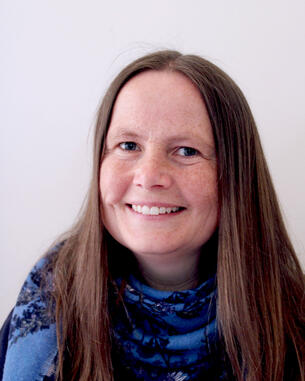Ellen Sagaas Røed is defending her dissertation for the degree philosophiae doctor (PhD) at the University of South-Eastern Norway.

The doctoral work has been carried out at the Faculty of Technology, Natural Sciences and Maritime Sciences at campus Vestfold.
You are welcome to follow the trial lecture and the public defence.
Summary
Successful oceanic resource management is based on knowledge, and underwater information is being collected from an increasing number of robots and other small platforms. These platforms use ultrasound, so-called sonar or echo sounder, to investigate the ocean and the seabed. To gather as much information as possible, we want to be able to transmit sound at many different frequencies. Signal strengths from different frequencies give information on the type of biology or oceanographic layers. The unit that transmits and receives sound is called a transducer. This PhD thesis investigates how new materials can be used to make compact underwater transducers that can be operated over a wider frequency range than the current designs. The new materials are called piezoelectric single crystals and have high coupling between electrical and mechanical energy compared to the piezoelectric ceramics used in most underwater transducers today.
The small platforms provide limited space also for the electronics that are controlling the transducers. To prevent heating of the electronics, it is important to avoid that a large fraction of the electrical power is reflected from the transducer and back into the electronics as so-called reactive power.
The PhD thesis analyses several single crystal transducer designs. The first design is an air-backed piezocomposite with two acoustic matching layers, providing reactive power below 50 % in a frequency band of width 175%, referred to the resonance frequency. The wide frequency band is obtained by wide separation of the transducer resonances, with the aim of transmitting relatively narrowband pulses at a variety of frequencies. This is a different strategy than the conventional optimization for a maximally flat frequency band.
The second transducer design investigated is called a tonpilz. Comparison of the two designs shows that the frequency independent acoustic matching inherent in the tonpilz design is advantageous when it comes to keeping the reactive power low in a wide frequency band.
The single crystals provide high electromechanical coupling also in the transverse mode. In the thesis this is investigated for a third design, with transversely poled single crystal blocks embedded in a polymer matrix. It is shown that the given design provides almost 50 times more acoustic power at a given voltage compared to a ceramic piezocomposite in the conventional vibration mode. This opens for compact transducers that can be operated over a wide frequency range and driven by low voltages. In addition, the composite thickness is reduced by 50 %. These advantages make the single crystal transducers well suited for mounting on small platforms.
